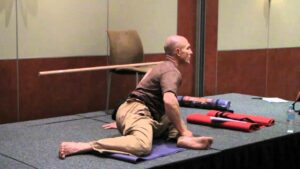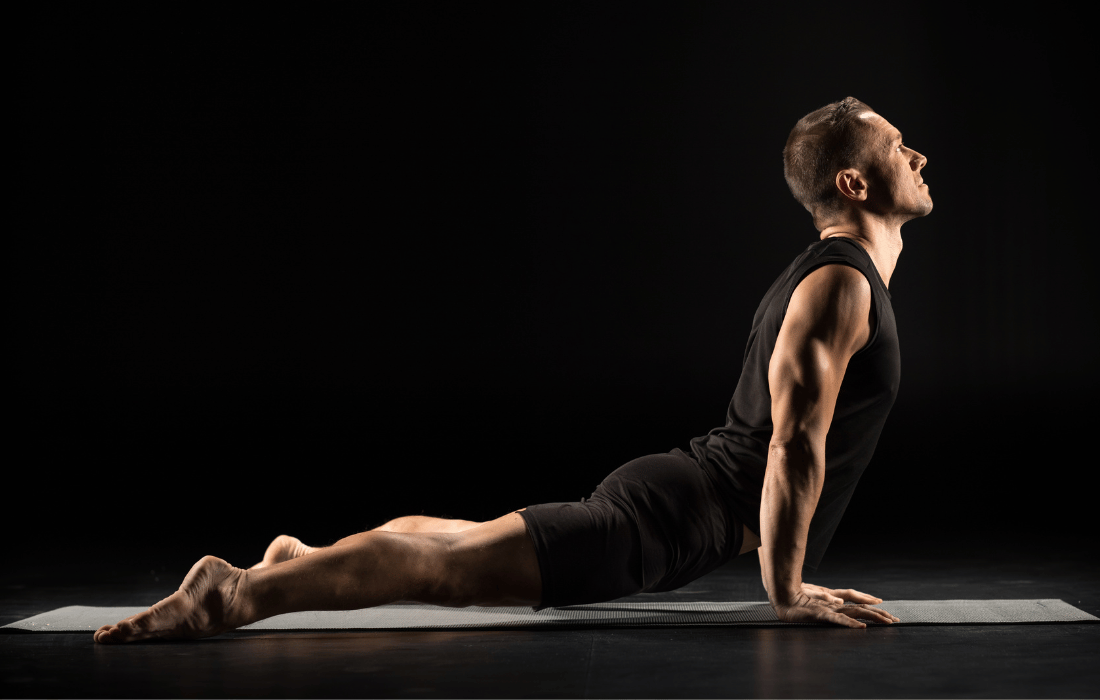Stretching is one of the most misunderstood elements of fitness. For years, athletes and fitness enthusiasts were taught to touch their toes or hold a stretch before hitting the field, gym, or track. However, modern research has unveiled that this traditional approach might not be the most effective – or even safe. Active stretching before activity and static stretching afterward have emerged as the optimal way to prepare and recover, offering performance boosts and injury prevention. If you’re still holding static stretches before your workout or game, it’s time to rethink your routine. This guide will help you understand the science behind stretching, explore the dangers of misusing static stretches, and provide actionable tools to improve your mobility and performance.
Why Stretching Matters: The Basics
Stretching serves several purposes in an athletic routine: 1.) Increases flexibility, helping muscles reach their full range of motion; 2.) Prepares the body for movement, warming up joints and improving coordination; 3.) Prevents injuries, reducing muscle stiffness and the risk of strains; and 4.) Enhances recovery, easing soreness, and promotes relaxation after activity.
The problem is that not all types of stretching serve the same purpose. Knowing when to use active stretching and when to rely on static stretching can make all the difference in your performance and recovery.
Static Stretching: What It Is and Why Timing Matters
Static stretching involves holding a muscle in a lengthened position for an extended period, usually 15-60 seconds. Examples include seated forward folds, hamstring stretches, and shoulder stretches. While this method is effective for improving flexibility over time and aiding recovery, it is not ideal before a workout.
The Science Behind Static Stretching Before Activity
Studies have shown that static stretching before activity can reduce muscle strength and power, diminish explosiveness, and increase injury risk. Muscles that are overly relaxed and not properly activated are less prepared to handle the demands of sudden movement. Static stretching is better suited for post-activity routines, where the goal is to reduce tension, increase flexibility, and relax the muscles. Incorporating it at this stage can help ease soreness, prevent stiffness, and promote overall recovery.
Insights from Research
One study from the European Journal of Applied Physiology provides a solid review of the effects of static and dynamic stretching on performance. Their findings highlight that static stretching can impair performance when done before activity, particularly for tasks involving strength, speed, or power. However, the study also notes that short-duration static stretching (less than 90 seconds total) at lower intensities may not have significant negative effects. Additionally, static stretching can benefit activities requiring slow, controlled movements, such as slower eccentric contractions or stretch-shortening cycles. For athletes aiming to maximize performance, the evidence supports prioritizing dynamic stretching before activity and reserving static stretching for recovery or separate sessions.
Active Stretching: The Optimal Warm-Up
Active stretching (or dynamic stretching) involves controlled, repetitive movements that take muscles and joints through their full range of motion. Examples include leg swings, walking lunges, and arm circles.
Why Active Stretching Before Activity is Crucial
Dynamic stretches prepare the body for movement, increase blood flow and heart rate, enhance neuromuscular activation, and boost performance. Unlike static stretching, dynamic movements improve power, speed, and agility, giving you a competitive edge.
Examples of Active Stretches
Leg Swings: Swing each leg forward and backward, keeping your movement controlled.
Walking Lunges: Step forward into a lunge, rotating your torso toward your lead leg.
Arm Circles: Perform forward and backward circles to warm up your shoulders.
High Knees: Run in place, lifting your knees to hip height with each step.
Butt Kicks: Jog in place while bringing your heels up to your glutes. These movements prime your body for action and reduce the likelihood of injury.
Another worthy challenge to consider is incorporating animal-style movement patterns into your routine. Athletes like Conor McGregor and Ido Portal are known for mastering these primal movements that engage the entire body in dynamic, fluid patterns. Think bear crawls, crab walks, and lizard crawls—these exercises build strength, mobility, and coordination in a way that traditional stretches often miss. Bruce Lee would undoubtedly approve of this holistic, movement-based approach. These movements prime your body for action and reduce the likelihood of injury.
The Danger of Static Stretching Before Activity
Many athletes unknowingly increase their risk of injury by holding static stretches before workouts. This outdated habit creates a false sense of readiness, as static stretching can weaken muscles temporarily, reduce joint stability, and limit explosive power. For example, a soccer player who performs a static hamstring stretch before sprinting may find that their overly relaxed muscle cannot generate the force needed for a quick acceleration, increasing the risk of strain. Save static stretches for after your workout, when your muscles are warm and ready to relax.
Personal Journey: From Small-Minded Thinking to a Stretching Advocate
Growing up, my physical activity centered around riding motorcycles, mountain bikes, and BMX bikes, running early in the mornings, and lightweight training with my dad or friends. High school football introduced me to heavy lifting, which helped me bulk up but also made me inflexible. My dad often joked I was too muscular for motocross—and he was right. Wrestling later forced my body to adapt. Long, grueling practices helped me shed excess weight, regain flexibility, and build endurance. Yet, by college, I still lacked an understanding of proper stretching.
During my freshman year of college, a kinesiology professor challenged us to stretch daily, holding each position for two minutes while focusing on deep breathing. At just 19 years old, I was shocked by how stiff my body had become. This humbling experience motivated me to dive into yoga and mobility training, which not only improved my flexibility but also transformed my perspective on fitness. Stretching became more than just an exercise—it became a crucial tool for healing, optimizing movement, and aiding recovery. Understanding how to stretch effectively has reshaped my approach to fitness, and it can do the same for you.
Mobility Training: The Missing Link in Many Routines

While stretching focuses on muscle length, mobility training addresses the active range of motion in your joints. Mobility is critical for athletes because it allows for fluid, unrestricted movement during sports and workouts. Without adequate mobility, even well-stretched muscles may struggle to perform efficiently.
Benefits of Mobility Training
Injury prevention through strong, mobile joints.
Improved biomechanics and technique.
Reduced chronic pain and enhanced longevity.
Key Mobility Exercises
Cat-Cow Stretch: Alternating between arching and rounding your back improves spinal mobility.
Hip 90/90 Stretch: Sit with one leg in front, bent at 90 degrees, and the other leg to the side, also bent at 90 degrees. Shift between positions to improve hip mobility.
Thoracic Rotations: On all fours, rotate one arm upward toward the ceiling, twisting your upper back.
Deep Squat Holds: Sit in a deep squat with your heels on the ground to open up your hips and ankles.
Tools to Enhance Your Stretching and Mobility Routine
Foam rollers, resistance bands, massage guns, balance boards, and yoga blocks or straps can make your routine more effective and enjoyable. Use these tools to release muscle tension, improve blood flow, and deepen stretches.
Designing Your Stretching and Mobility Routine
Before Activity: Active Stretching Routine (10-15 Minutes)
High Knees: 30 seconds.
Walking Lunges with a Twist: 10 reps per side.
Leg Swings: 10 forward and backward swings per leg.
Arm Circles: 15 seconds forward and backward.
Side Shuffles: 30 seconds.
After Activity: Static Stretching Routine (10-15 Minutes)
Seated Forward Fold: Hold for 30 seconds.
Quad Stretch: Hold for 30 seconds per leg.
Butterfly Stretch: Hold for 30 seconds.
Child’s Pose: Hold for 30 seconds.
Figure Four Stretch: Hold for 30 seconds per leg.
Weekly Mobility Training (2-3 Times Per Week)
Deep Squat Holds: 1-2 minutes.
Cat-Cow Stretch: 10 cycles.
Hip 90/90 Stretch: 10 reps per side.
Thoracic Rotations: 10 reps per side.
Resistance Band Shoulder Stretch: 10 reps.
Common Stretching and Mobility Mistakes
Skipping the warm-up.
Relying solely on static stretches.
Pushing too hard and overstretching.
Inconsistent practice.
Conclusion
Stretching and mobility are not one-size-fits-all practices. By understanding the roles of active and static stretching, you can tailor your routine to maximize performance and recovery. Active stretching primes your muscles for movement, while static stretching helps them relax and recover. Mobility training bridges the gap, ensuring that your joints and muscles work together seamlessly. With consistency and attention to detail, you’ll unlock new levels of performance and injury resilience. Remember, how you stretch matters as much as how often you stretch. Make it count.







